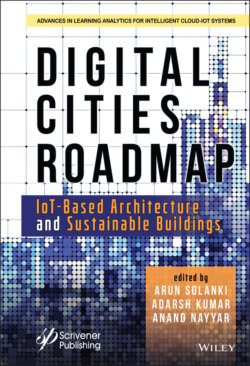Читать книгу Digital Cities Roadmap - Группа авторов - Страница 20
1.4.3 Perspectives of Local Community
ОглавлениеThere are a number of communities in the United States which recover each year from a dangerous event. Over the last 50 years, an annual average of 40 declarations of presidential hazardous events has been issued (FEMA 2013). Hazardous results are first experienced and first handled in populations. While governments cannot eliminate natural threats, long-term planning and prioritized initiatives that are enforced over time will mitigate their effects. The level of recovery and the eventual outcome would rely on the scope and magnitude of the incident and on the action taken by government to mitigate harm, preserve properties, react in a timely and organized manner and restore government functionality within a given time period. Such activities collectively assess the strength of a group.
Resilience provides a holistic solution to risk handling catastrophic incidents, as well as environmental problems, through structures that allow new generations the same opportunities to prosper. Communities will move for a more socially and economically equitable and prosperous environment by resolving skill differences and essential threats through a systemic integrated and systematic strategy [29–35]. Approaches include: introduction into City planning and network projects with adaptability, resilience and regeneration, utilizing a framework methodology that tackles multi-scale connections and dependency and methodologies that resolve the complexity of the potential severity of hazards (Table 1.2).
Table 1.2 Planning for community resilience [55].
| Planning steps | Key activities |
| 1. Form a collaborative Planning Team | Identify resilience leader for the communityIdentify team members, and their roles and responsibilitiesIdentify key public and private stakeholders for all phases of planning and implementation |
| 2. Understand the situation | Social DimensionsIdentify and characterize functions and dependencies of social institutions, including business, industry, and financial systems, based on individual/social needs met by these institutions and social vulnerabilitiesIdentify how social functions are supported by the built environmentIdentify key contacts and representatives for evaluation, coordination, and decision nuking activitiesBuilt Environment➢ Identify and characterize buildings and infrastructure systems, including condition, location, and dependencies between and among systems➢ Identify key contacts/ representatives for evaluation, coordination, and decision-making activities➢ Identify existing plans to be coordinated with the resilience planLink social functions to the supporting built environmentDefine building clusters andsupporting built environment supporting infrastructure |
| 3. Determine goals and objectives | Establish long-term community goalsEstablish desired recovery performance goals for the built environment at the comma level based on social needs, and dependencies and cascading effects between systemsDefine community hazards and levelsDetermine anticipated performance during and after a hazards event to support social functionsSummarize the results |
| 4. Plan development | Evaluate gaps between the desired and anticipated performance of the built environment to improve community resilience and summarize resultsIdentify solutions to address gaps including both administrative and construction optionsPrioritize solutions and develop an implementation strategy |
| 5. Plan preparation, review and approval | Document the community plan and implementation strategyObtain feedback and approval Mon stakeholders and communityFinalize and approve the planMon stakeholders and community |
| 6. Plan implementation and maintenance | Execute approved administrative and construction solutionsEvaluate and update on a periodic basisModify short or long-term implementation strategy to achieve performance goals as needed |
